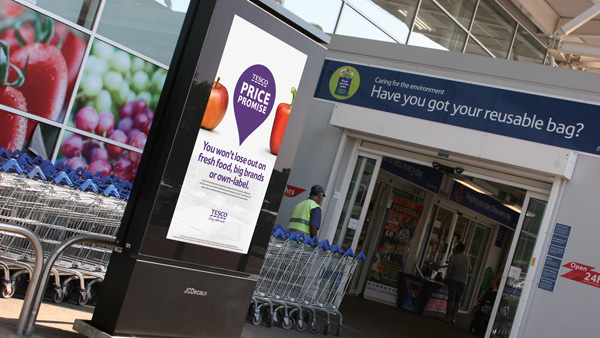It’s a known fact that most, if not all, electronics operate best in cool, dry conditions. Ever been inside an underground data center? They keep those rooms pretty chilly. Heat build-up or “hot spots” are one of the leading causes of electronic failures/malfunctions.
When considering deploying digital displays, especially for outdoor applications, it’s important to anticipate that over-heating could become a problem.
Most outdoor digital displays will be exposed to high ambient temperatures and direct sun-load at some point throughout the year. Considering that these digital displays need to be “sealed” to protect them from rain, snow, and dust, placing them inside a sealed enclosure further compounds the problem of internal heat build-up.
These same outdoor displays also need extra powerful backlights to produce 2500+ nits of brightness so they can be seen when the sun is shining. This additional backlight power adds to the existing heat load created by the sealed enclosure.
So when you factor in sun load, high ambient temperature, extra LED backlight heat, and a sealed enclosure you can understand that a robust cooling system isn’t just a nice feature to have, it’s an absolute necessity.
The CoolVu® Thermal Management System
CoolVu® is our answer to the cooling conundrum. Our engineers used computational fluid dynamics to model airflow and heat build-up on a display subjected to variable ambient temperatures and sun load, while producing 3500+ nits of luminance. This model allows us to see how hot spots form inside a “sealed” enclosure and provide us insight as to how we could design around this problem. This led to the development of our patented CoolVu thermal management system, a design feature that allows our outdoor displays to run at peak luminance at any ambient temperature up to 50°C (122°F), without loss in display brightness.
How CoolVu® works
There are two general approaches to cooling the optical surfaces and electronics of an outdoor digital display. The first involves using air conditioners to blow cold air into the display cabinet. This approach works well for keeping things cool, but it introduces some new problems, biggest of which is the formation of condensation within the display enclosure resulting in water on and failure of the display electronics. This approach also requires periodic draining of condensation to the exterior of the display. Air conditioners are also expensive to operate and maintain. They’re noisy and just aren’t a great solution for street side displays.
The other approach to cooling involves using exhaust fans, vents and filters to blow air over components, just like in your household PC. The challenge here is that you don’t want to blast your display optics or electronics with ambient air, especially outdoors where it’s humid and dusty.This approach commonly results in condensation build-up and rapidly degraded performance.
LG-MRI BoldVu® displays are a little different. In our CoolVu® system we don’t use air conditioners or air filters and we never expose electronics, display surfaces, optical films, or backlight assemblies to ambient air. CoolVu® is a heat exchanging system that cools electronics with a sealed volume of air that continually circulates across the surface of the LCD and over the electronic components. A separate volume of air passes through isolated channels and exhausts the heat out of the display chassis. In this system, all electronics are kept in a cool, dry and clean environment, which prolongs their life and significantly reduces field failures and associated maintenance costs.
BoldVu® displays do not need an environmental enclosure to cool them in the outdoor environment. CoolVu® is a zero maintenance thermal management system that ensures that display not only survive but thrive outside.

